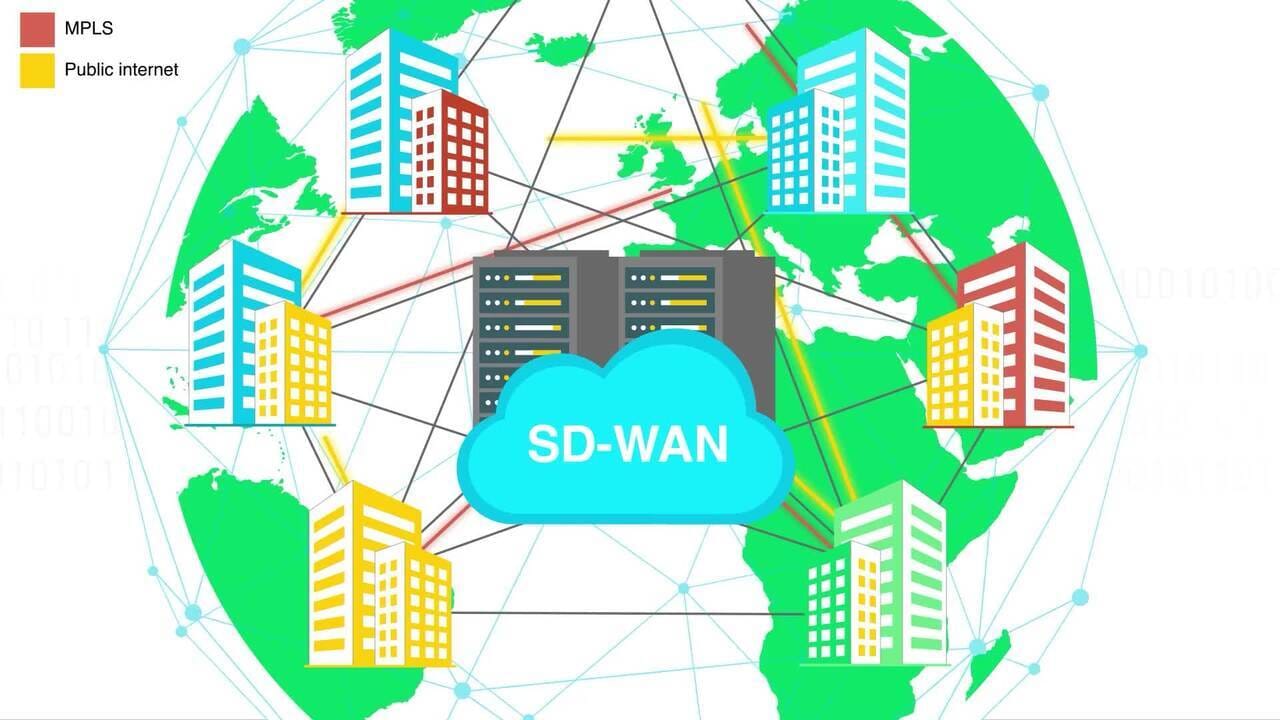-
Why Machine Learning (ML) and Artificial Intelligence (AI) Are Key Technologies for SD-WAN
- What Is Secure SD-WAN? | What It Is and How It Works
- What Is SD-WAN as a Service (SD-WANaaS)?
-
What Is SD-WAN Security? | SD-WAN Security Considerations
- What are the main security challenges of SD-WAN?
- What are the primary SD-WAN security features?
- What is AI’s role in improving SD-WAN security?
- What is the role of SASE in SD-WAN security?
- Do next-generation SD-WAN solutions provide better security?
- What is the difference between SD-WAN security and secure SD-WAN?
- SD-WAN security FAQs
- What Is Next-Generation SD-WAN?
-
What Is Managed SD-WAN?
- How does managed SD-WAN work?
- What are the differences between DIY and managed SD-WAN?
- Why do businesses need managed SD-WAN?
- Types of managed SD-WAN deployments
- What are the pros and cons of managed SD-WAN?
- What is the difference between managed SD-WAN and SD-WAN as a service?
- How to choose the right deployment model: managed SD-WAN, DIY, or a combination
- What Is Hybrid SD-WAN?
-
Branch Network Security | Securing Branch Networks with SD-WAN
-
What Is an SD-WAN Appliance? | SD-WAN Hardware & Equipment
- How do SD-WAN appliances work?
- What are the different types of SD-WAN appliances?
- What are the different SD-WAN appliance deployment models?
- What are the benefits of SD-WAN appliances?
- What are the common features of SD-WAN appliances?
- Security considerations for SD-WAN appliances
- How to choose the right SD-WAN appliance for your needs
- SD-WAN appliance FAQs
-
Traditional WAN vs. SD-WAN: What Are the Differences?
- How did traditional WAN evolve into SD-WAN?
- What is a WAN?
- What is SD-WAN?
- What are the differences between SD-WAN and WAN?
- What are the similarities between SD-WAN and WAN?
- What makes SD-WAN a better choice over WAN?
- When is traditional WAN the right choice?
- How to choose between WAN and SD-WAN
- Traditional WAN vs. SD-WAN FAQs
-
Top 5 Requirements for Securing Your Branch Offices
-
What are the differences between SD-WAN and SDN?
- What is SD-WAN (software-defined wide area network)?
- What is SDN (software-defined networking)?
- Primary SD-WAN use cases
- Primary SDN use cases
- What are the benefits of SD-WAN?
- What are the benefits of SDN?
- What are the potential implementation challenges of SD-WAN?
- What are the potential implementation challenges of SDN?
- What are the differences between SD-WAN and SDN?
- What are the similarities between SD-WAN and SDN?
- How to choose between SD-WAN and SDN
-
SD-WAN vs. NaaS: What Are the Differences?
- SD-WAN and NaaS in the current network services market
- What is SD-WAN?
- What is NaaS?
- What are the differences between SD-WAN and NaaS?
- What are the similarities between SD-WAN and NaaS?
- Will NaaS replace SD-WAN?
- How can SD-WAN and NaaS work together?
- What is the future of SD-WAN and NaaS?
- How to choose between SD-WAN and NaaS
- SD-WAN vs. NaaS FAQs
- How Do 5G and SD-WAN Work Together?
- SD-WAN vs MPLS vs Internet: What’s the Difference? Which is Right for Your Organization?
-
Types of SD-WAN Deployment Models: A Complete Guide
- Understanding modern SD-WAN capabilities and options
- What is SD-WAN?
- Types of SD-WAN management models
- DIY SD-WAN
- Fully managed SD-WAN
- Co-managed SD-WAN, aka Hybrid
- Managed CPE SD-WAN
- SD-WAN as a Service (SD-WANaaS)
- Types of SD-WAN deployment architectures
- Hub-and-spoke
- Mesh
- Hybrid mesh
- Types of SD-WAN deployment environments
- On-premises SD-WAN
- Cloud-based SD-WAN
- Hybrid SD-WAN
- How to choose the right SD-WAN deployment option for your business
- SD-WAN deployment models FAQs
- Top 7 SD-WAN Challenges: SD-WAN Risks, Issues, & Solutions
- MPLS | What Is Multiprotocol Label Switching
-
How to Execute an MPLS to SD-WAN Migration Step-by-Step
- Why do organizations switch from MPLS to SD-WAN?
- How is SD-WAN a better alternative to MPLS?
- What are the options for migration from MPLS to SD-WAN?
- Should you use an MSP for your MPLS to SD-WAN migration?
- What are the MPLS to SD-WAN migration challenges you can expect?
- Is there a middle ground between MPLS and SD-WAN?
- If your organization is planning an MPLS to SD-WAN migration, is SASE worth considering?
- How to create a successful MPLS to SD-WAN migration plan
- MPLS to SD-WAN migration FAQs
- How much does SD-WAN cost?
- How Does SD-WAN Automation Simplify Network Operations?
- How SD-WAN helps Today’s IoT
-
What Is SD-WAN Multicloud?
What Is an SD-WAN Gateway? | Definition, Explanation, Use Cases
An SD-WAN gateway is a central hub within an SD-WAN architecture that manages and directs network traffic between branch locations and cloud services. It facilitates traffic routing, ensuring optimized communication across the network.
SD-WAN gateways play a crucial role in maintaining network performance and security.
What are the limitations of hub-and-spoke architecture?
Originally, SD-WAN technology was developed to give organizations the ability to securely connect users, applications, and data flows on-premises or hosted in public or private clouds.
Traditional SD-WAN (software-defined wide area network) setups use point-to-point network setups. Which means an edge device is located at each endpoint, establishing a direct connection to other devices. This results in a hub-and-spoke architecture.
A hub-and-spoke architecture connects all branch sites (spokes) to a central hub, typically located at the headquarters or a data center.
Like this:
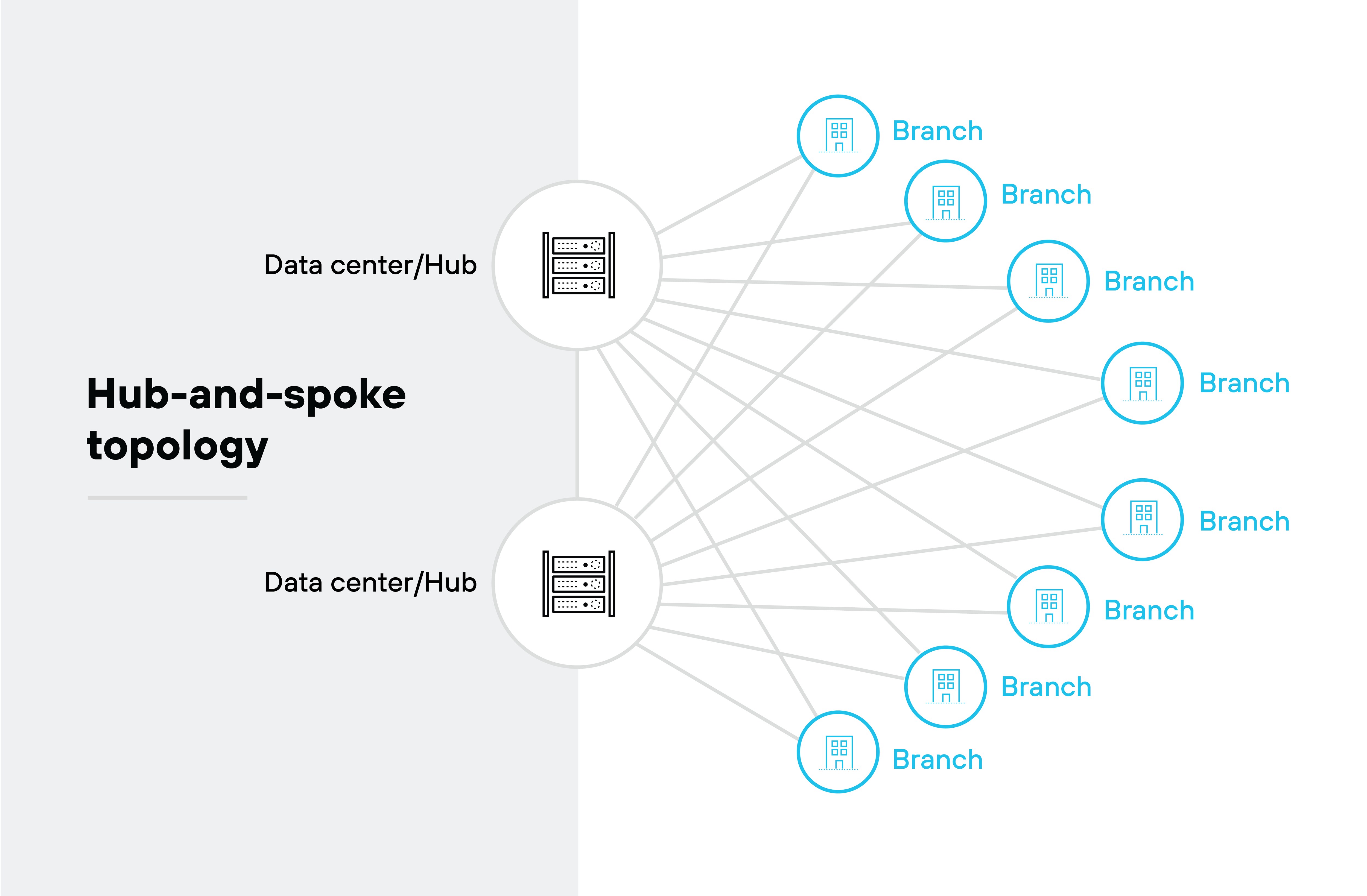
This configuration has been widely used over time, and to its credit, provides a straightforward way to manage network traffic.
But it also comes with limitations:
Latency
One major limitation is the added latency.
All branch-to-branch and branch-to-cloud communication must first route through the central hub. The detour can significantly slow down traffic, leading to delays and decreased performance— especially when accessing cloud-based services.
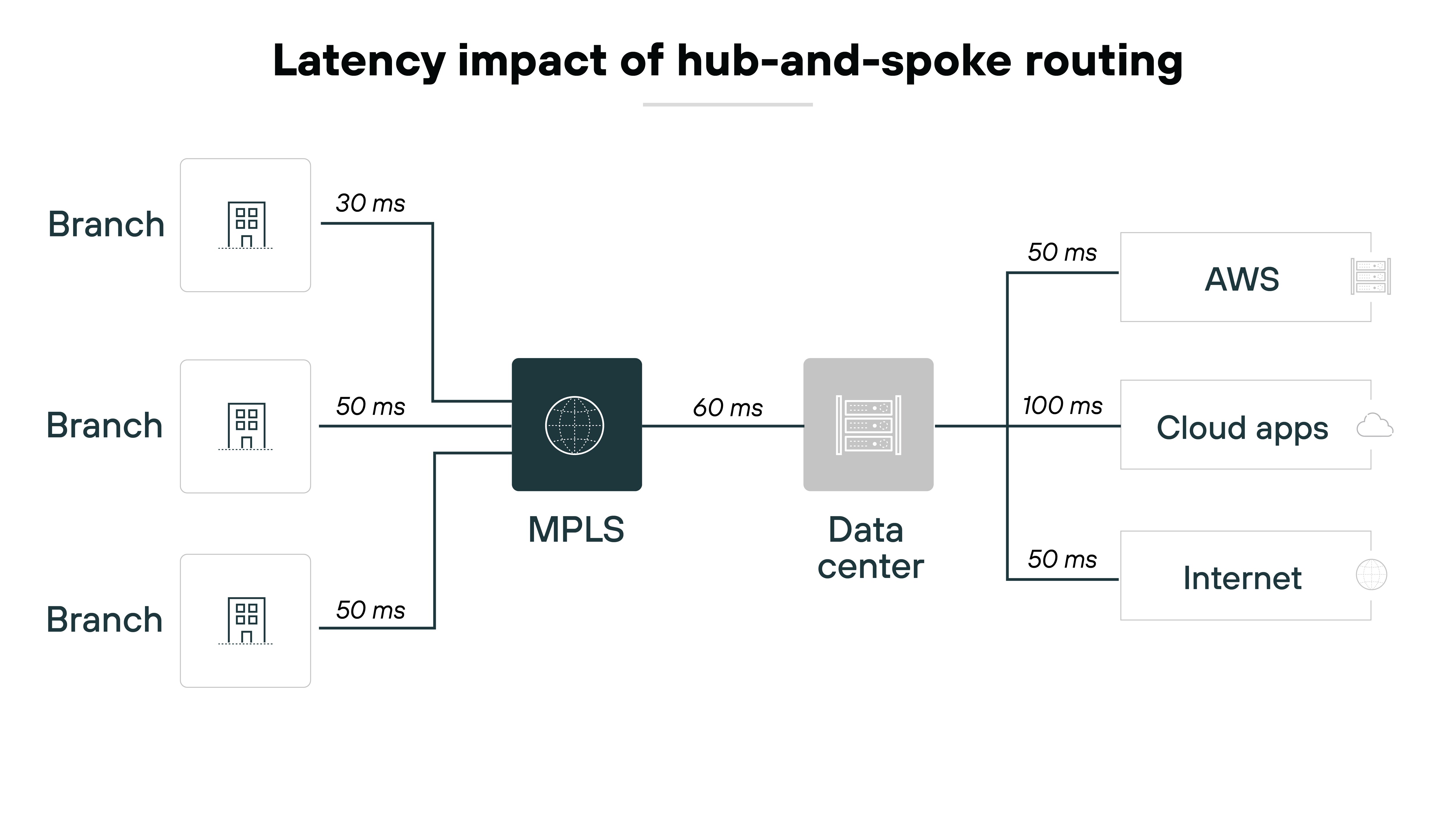
As more applications move to the cloud, the extra step becomes increasingly problematic.
Single point of failure
Another issue is the single point of failure inherent in this architecture.
The central hub is responsible for managing and securing all network traffic.
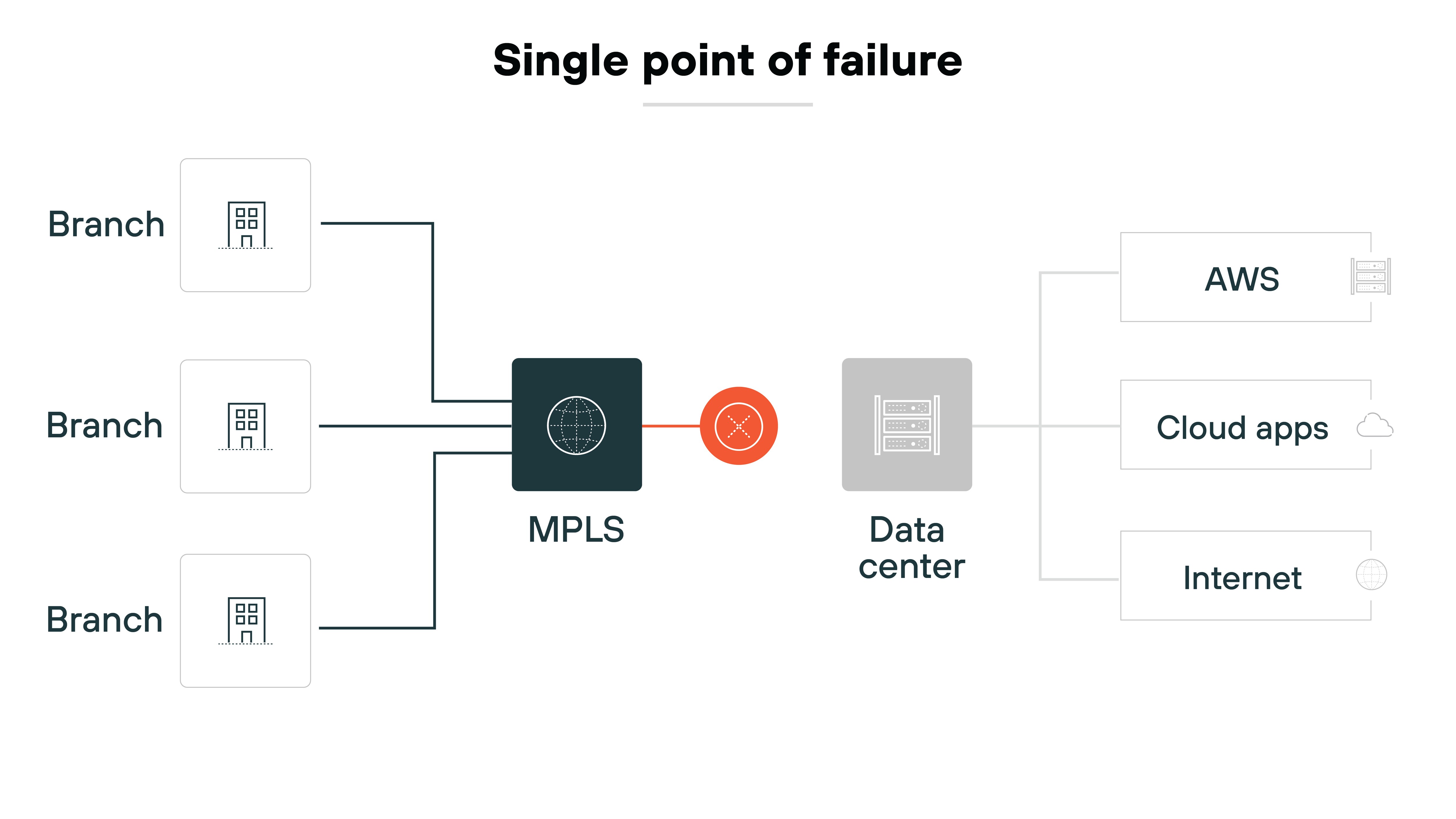
If the hub experiences an outage or becomes overloaded, the entire network can suffer. And that can lead to downtime, which tends to disrupt business operations and reduce productivity across the organization.
Scalability
Scalability is also a challenge.
As the number of branch sites increases, the central hub must handle more traffic. The added load can strain the hub, requiring costly upgrades or more complex configurations to maintain performance. The architecture’s reliance on a single point of control makes it less adaptable to growing network demands.
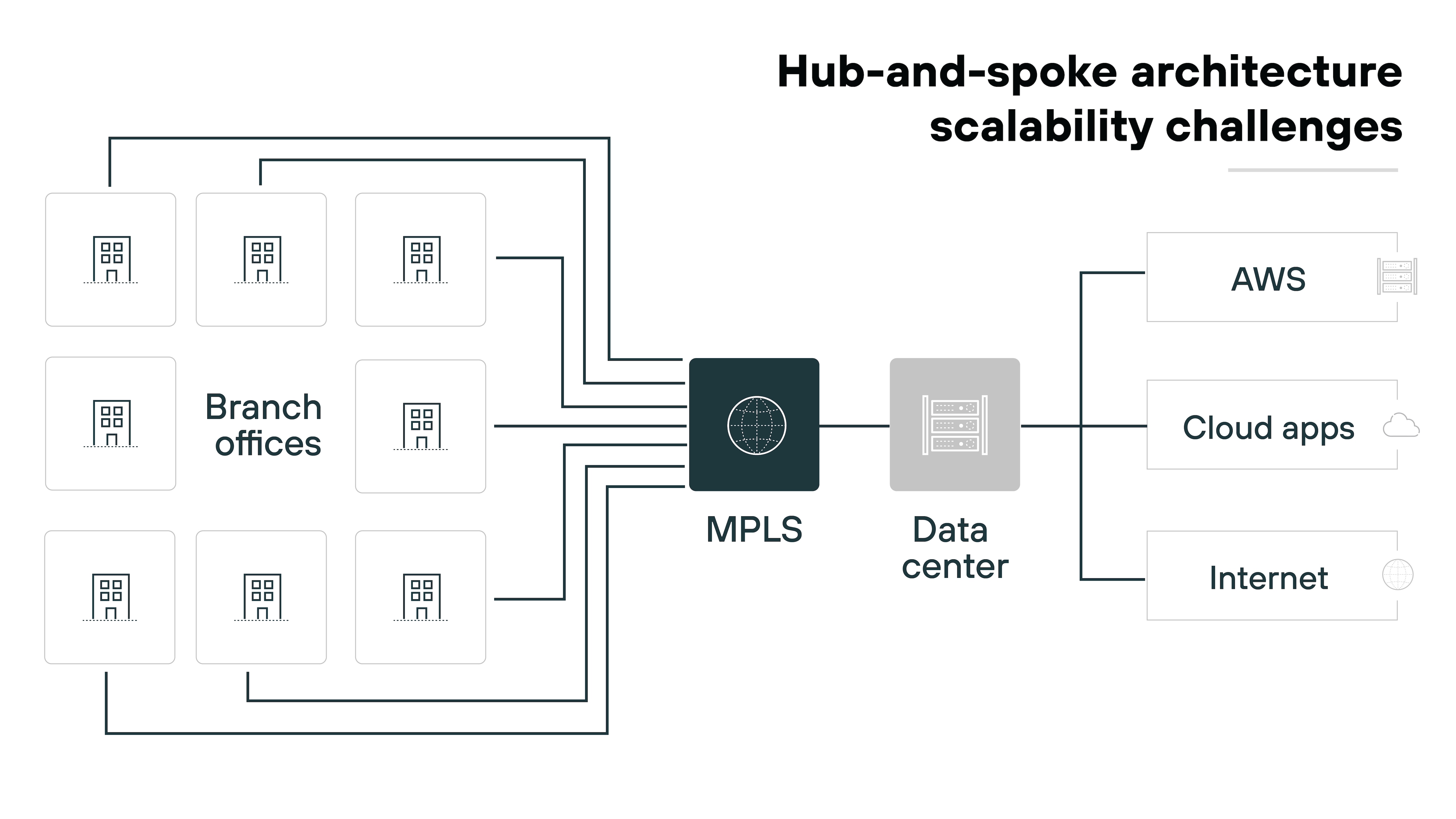
In today’s cloud-centric environment, this limitation becomes more apparent.
Modern SD-WAN solutions, including SD-WAN gateways, are designed to overcome these challenges by allowing direct branch-to-branch and branch-to-cloud communication.
This approach reduces latency, distributes traffic management, and enhances the overall efficiency of the network.
What is the purpose of an SD-WAN gateway?
The purpose of an SD-WAN gateway is to function as a central point that manages and directs traffic in an SD-WAN architecture.
Think of it as the hub that connects different branches and cloud services, allowing data flows to travel smoothly and efficiently across the network.
As mentioned, in traditional WAN setups, all traffic would typically pass through a headquarters or central data center. But with the rise of cloud services, the need for direct branch-to-cloud communication is a must—and the old model can create bottlenecks.
An SD-WAN gateway changes the game by intelligently routing traffic. It can be deployed on premises or in the cloud, outside the headquarters. Its job is to handle all the SD-WAN traffic and control.
Like so:
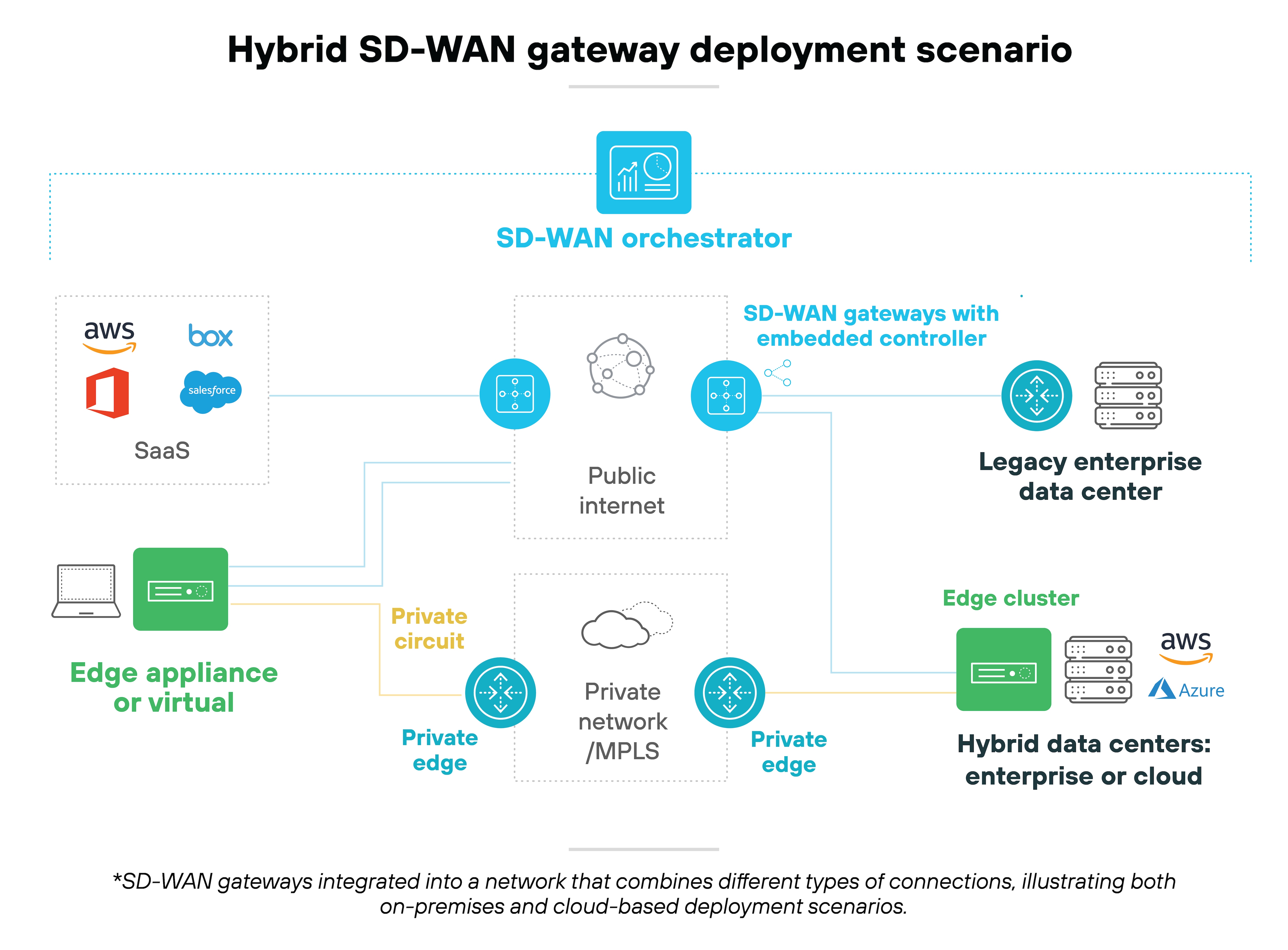
This way, instead of sending all data back to the central hub, branch offices can communicate directly with each other or with cloud services through the gateway. Which reduces the load on the headquarters network and improves performance overall.
Basically, the SD-WAN gateway is there to optimize how data travels across a network. Especially in environments where cloud services are heavily used.
Note: The concept of an “SD-WAN gateway” as part of an SD-WAN architecture is widely recognized and used in modern networking solutions, though the term isn’t necessarily universally defined. In many cases, this functionality might be integrated into other SD-WAN components, such as edge devices or controllers. The terminology can vary depending on the vendor or specific implementation of the SD-WAN solution.
What are the primary SD-WAN gateway use cases?
SD-WAN gateways work well for organizations with heavy cloud service usage, multiple branches, or complex networking needs. In these scenarios, implementing an SD-WAN gateway can optimize network performance and improve efficiency.
Multiple branch sites or heavy reliance on cloud-based services
SD-WAN gateways are especially useful for organizations with multiple branch sites that need to communicate efficiently. They allow direct communication between sites without relying on a central hub. And this majorly reduces delays.
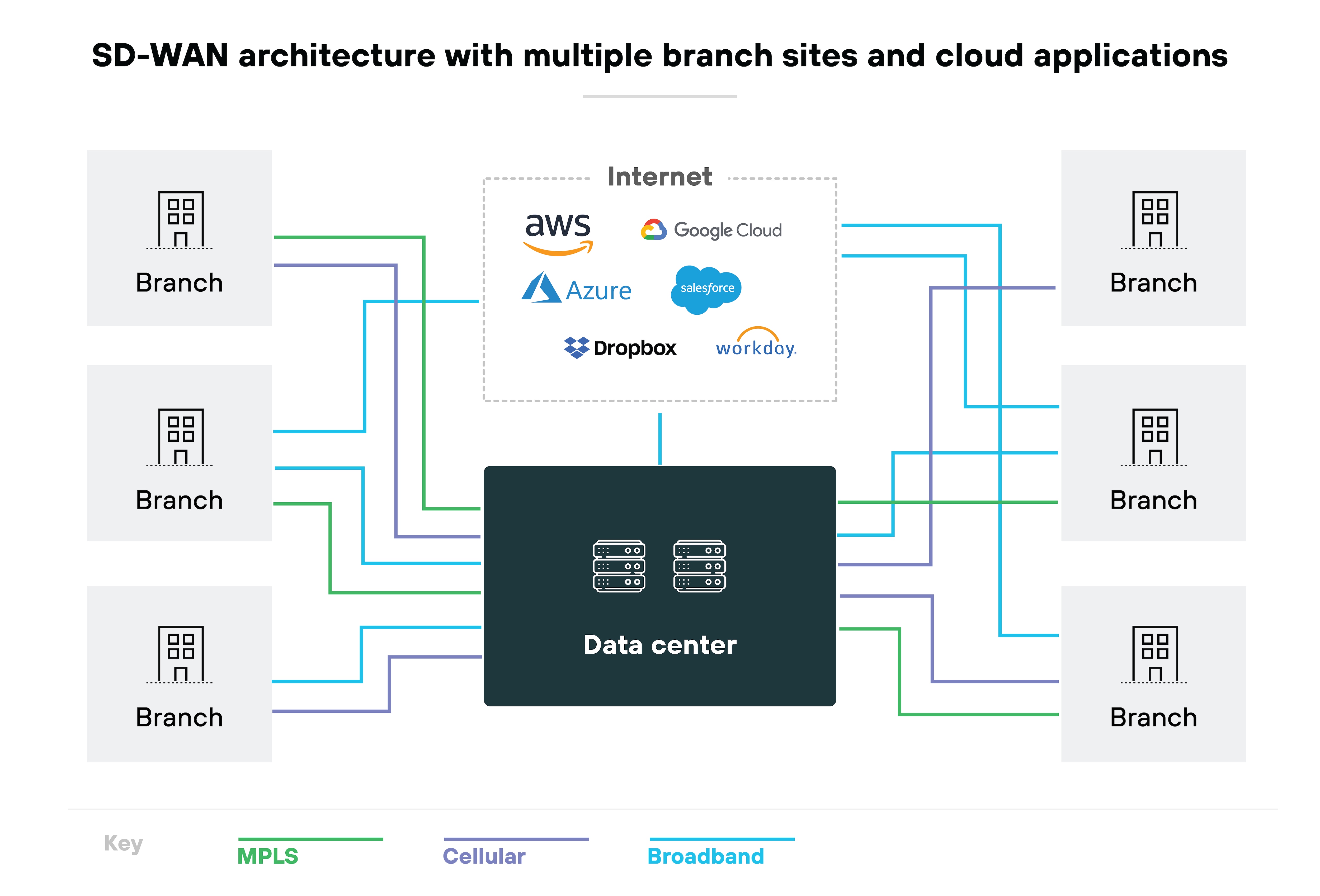
Enterprises that use a variety of cloud applications, like Office 365, Salesforce, or AWS-hosted tools, can benefit from an SD-WAN gateway as well. SD-WAN gateways provide direct connections to cloud services. Which means faster, more reliable access to applications.
Multiple remote sites or sites experiencing high volumes of site-to-site traffic
Businesses with complex network demands—such as those with multiple remote sites or those experiencing high volumes of site-to-site traffic—may also consider an SD-WAN gateway.
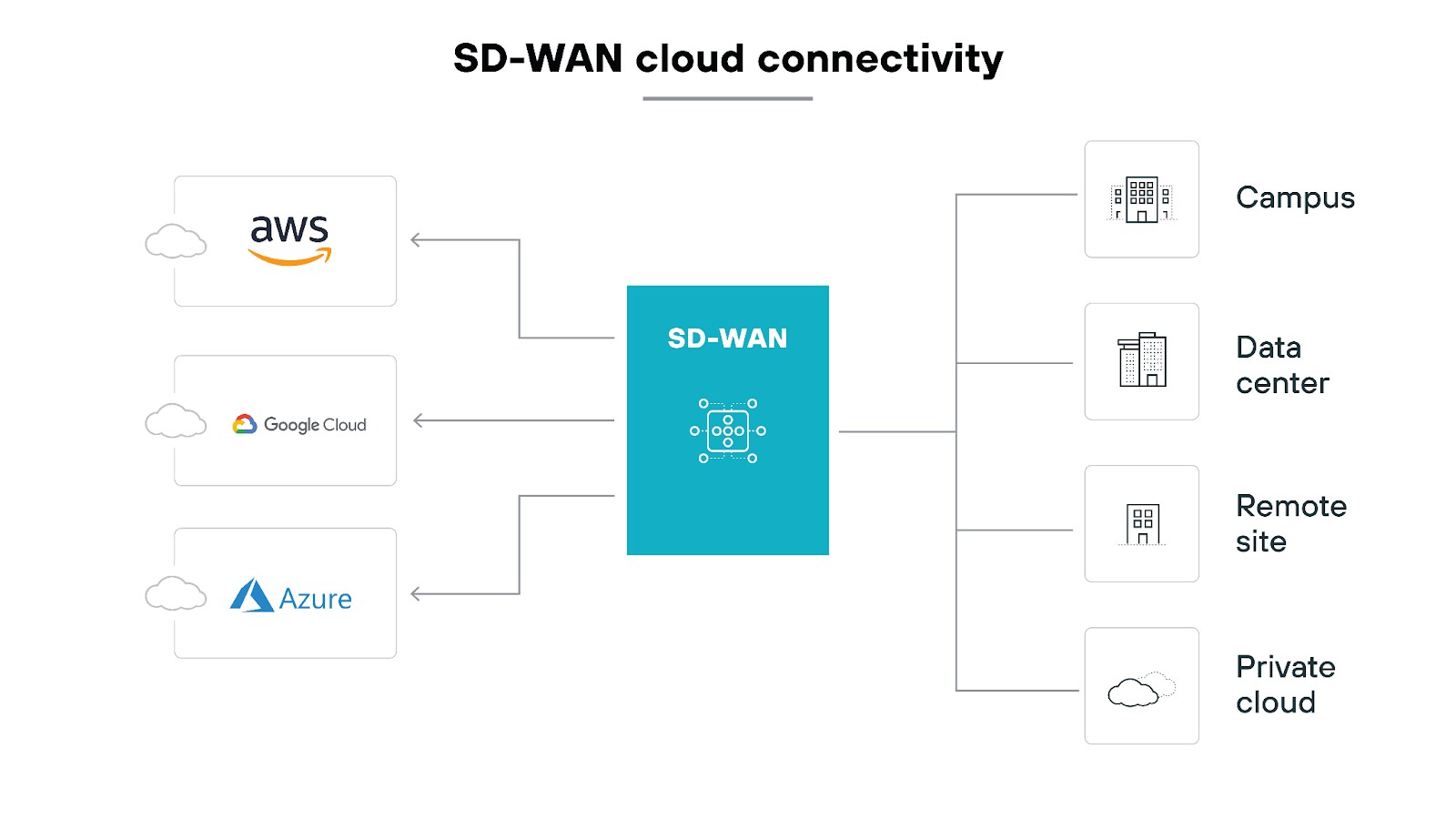
As explained, the gateway can offload the burden from a central data center by allowing direct branch-to-branch and branch-to-cloud communication. Which equals better network performance and less strain on headquarters' resources.
Meshed WAN architectures
Organizations with a long-term SD-WAN strategy that involves building a meshed WAN design across all their sites are another key group that would benefit from an SD-WAN gateway.
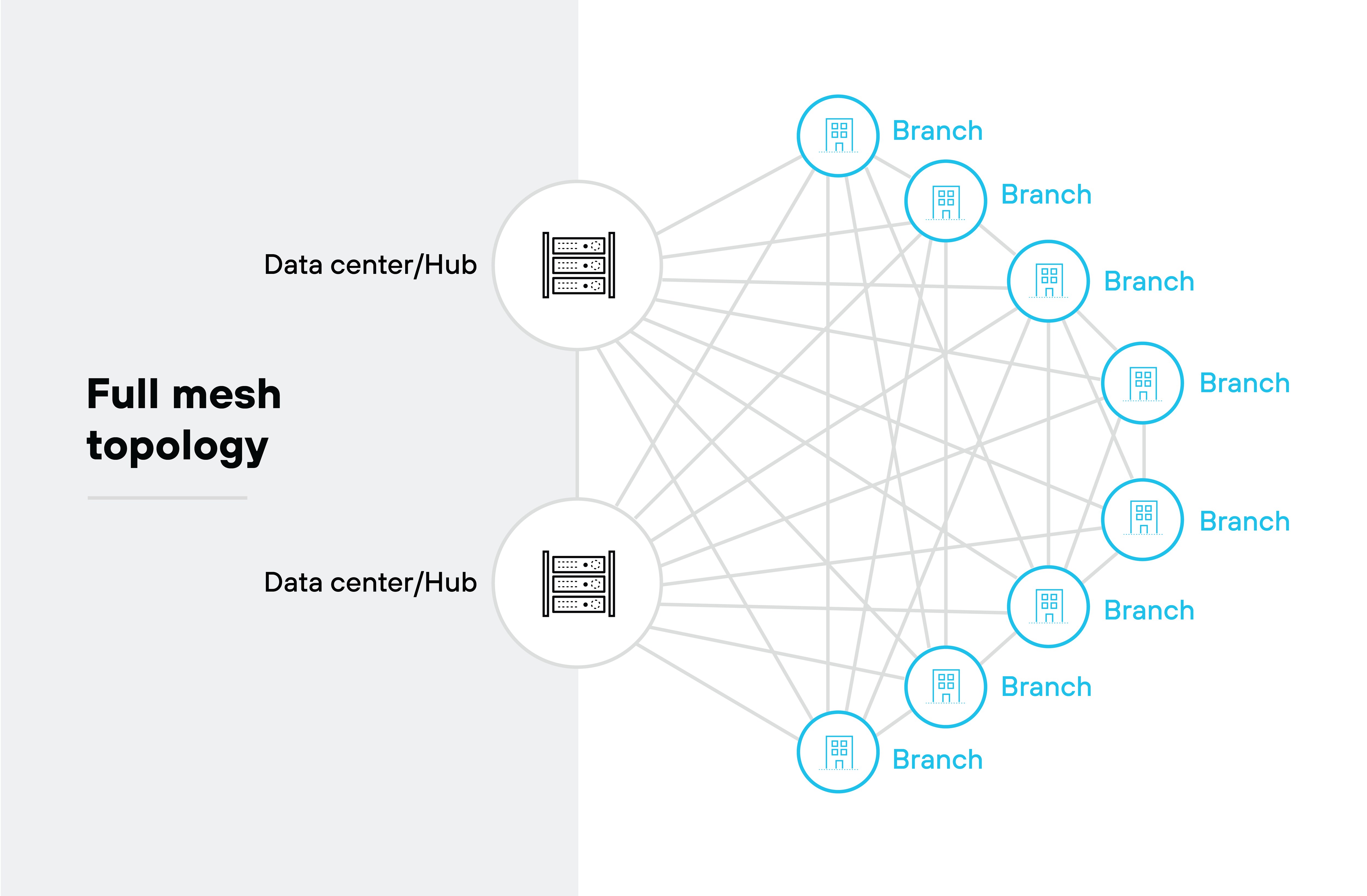
In these scenarios, a gateway can simplify network management. Plus, it reduces the hardware and operational costs associated with traditional point-to-point architectures.
Further reading:
- What Is SD-Branch?
- What Is SD-WAN Multicloud?
- What Is the Cloud-delivered Branch?
- What Is Next-Generation SD-WAN?
What are the features of an SD-WAN gateway?
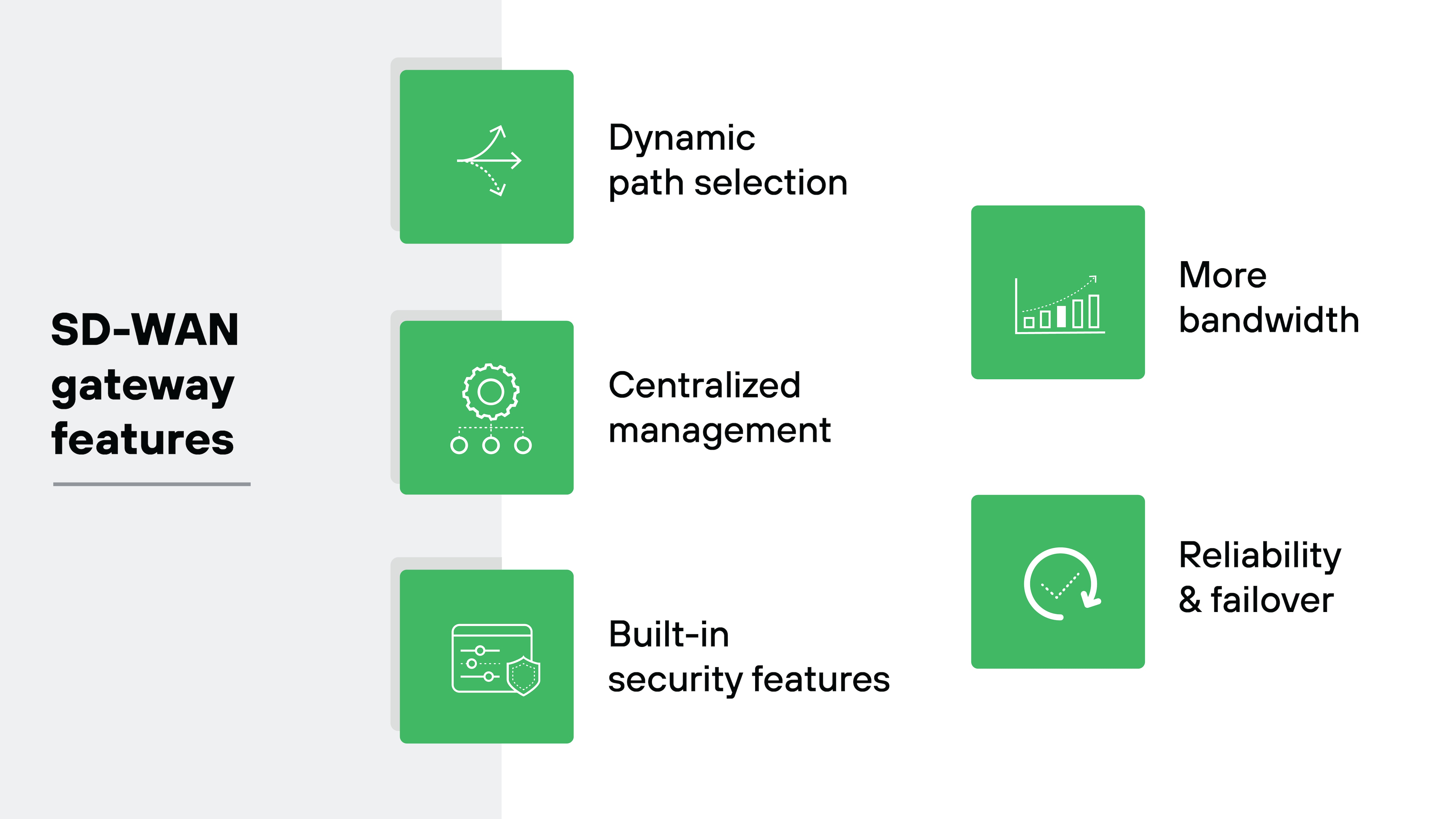
An SD-WAN gateway offers several key features:
- Dynamic path selection
- Centralized management
- Built-in security features
- More bandwidth
- Reliability and failover
Dynamic path selection
First and foremost is dynamic path selection.
This feature allows the gateway to choose the best route for network traffic in real-time. In other words, it dynamically selects the most efficient path for data to travel, avoiding congested or unreliable routes.
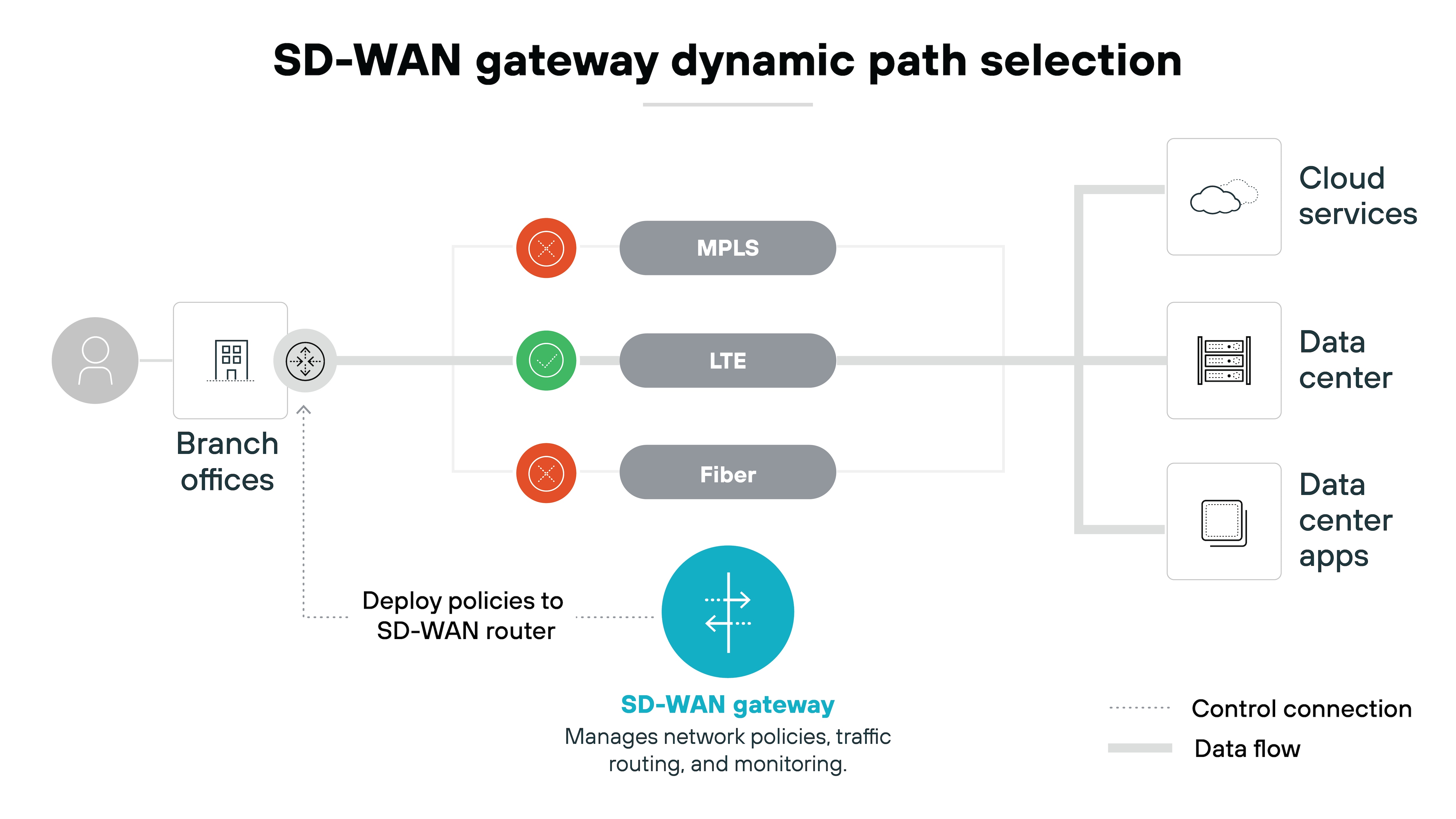
This ensures that traffic flows smoothly, which is particularly important for applications that require consistent, reliable performance.
Centralized management
An SD-WAN gateway provides a single point of control for managing the entire network.
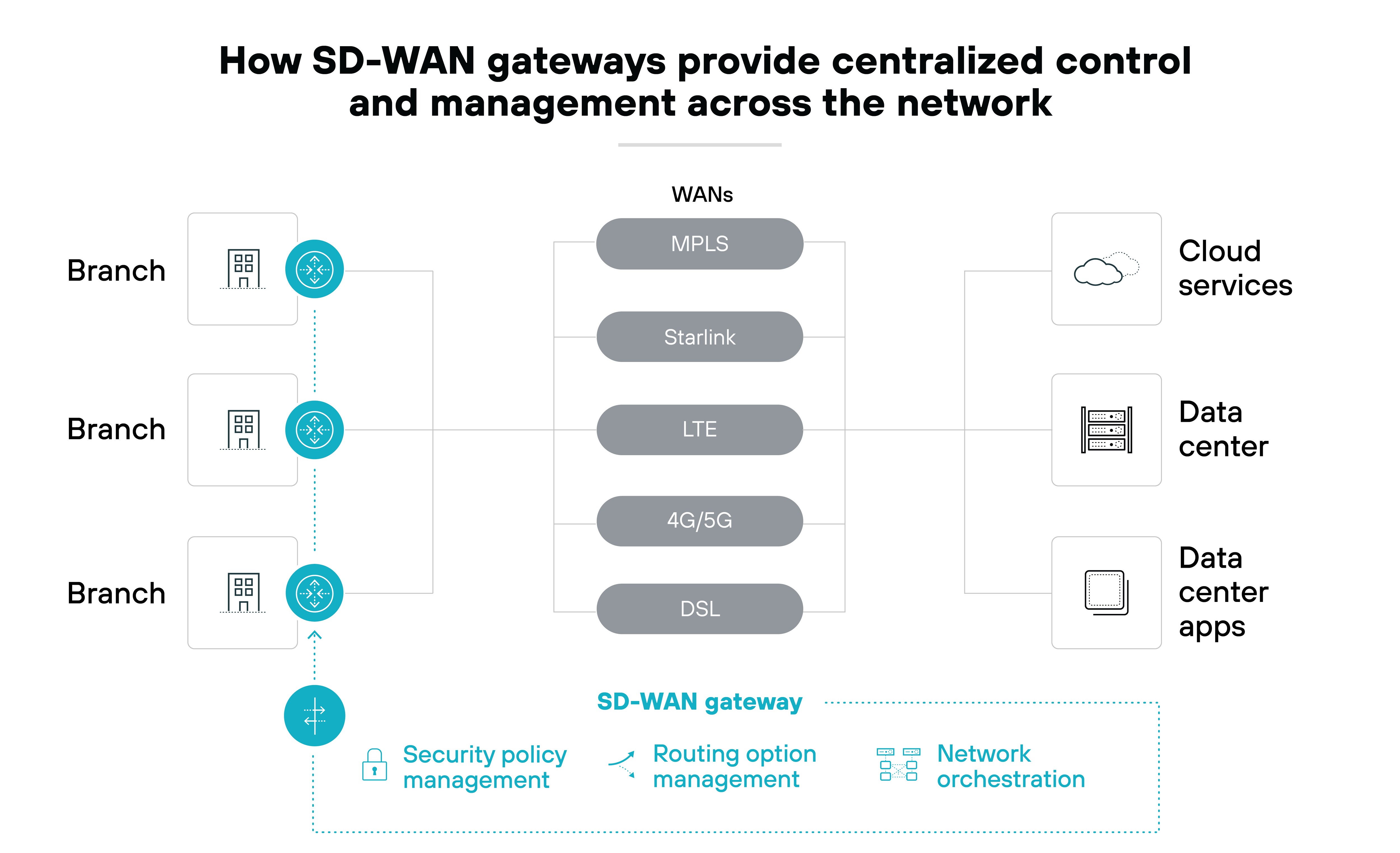
Centralizing control makes it way easier for organizations to monitor, deploy, and update network policies across all locations.
With centralized management, network teams can have deeper visibility into the network. Including access points, switches, and gateways. And that means more granular control over network operations.
Built-in security features
SD-WAN gateways typically include built-in security measures like firewalls, VPNs, and encryption.
These features help protect sensitive data as it moves across the network. So information remains secure from potential threats.
By integrating security directly into the gateway, organizations can somewhat lessen the need for separate security solutions.
Note: While SD-WAN gateways include important security features, these features are not exhaustive. Gateways are designed primarily for traffic management and optimization, not for comprehensive security. They should be part of a broader network security strategy that includes additional protective measures. The same is true for SD-WAN overall, but gateways are even more limited in scope.
WAN aggregation
Additionally, an SD-WAN gateway can improve overall bandwidth by aggregating multiple WAN connections.
Instead of relying on a single connection, the gateway can combine several, increasing the total available bandwidth.
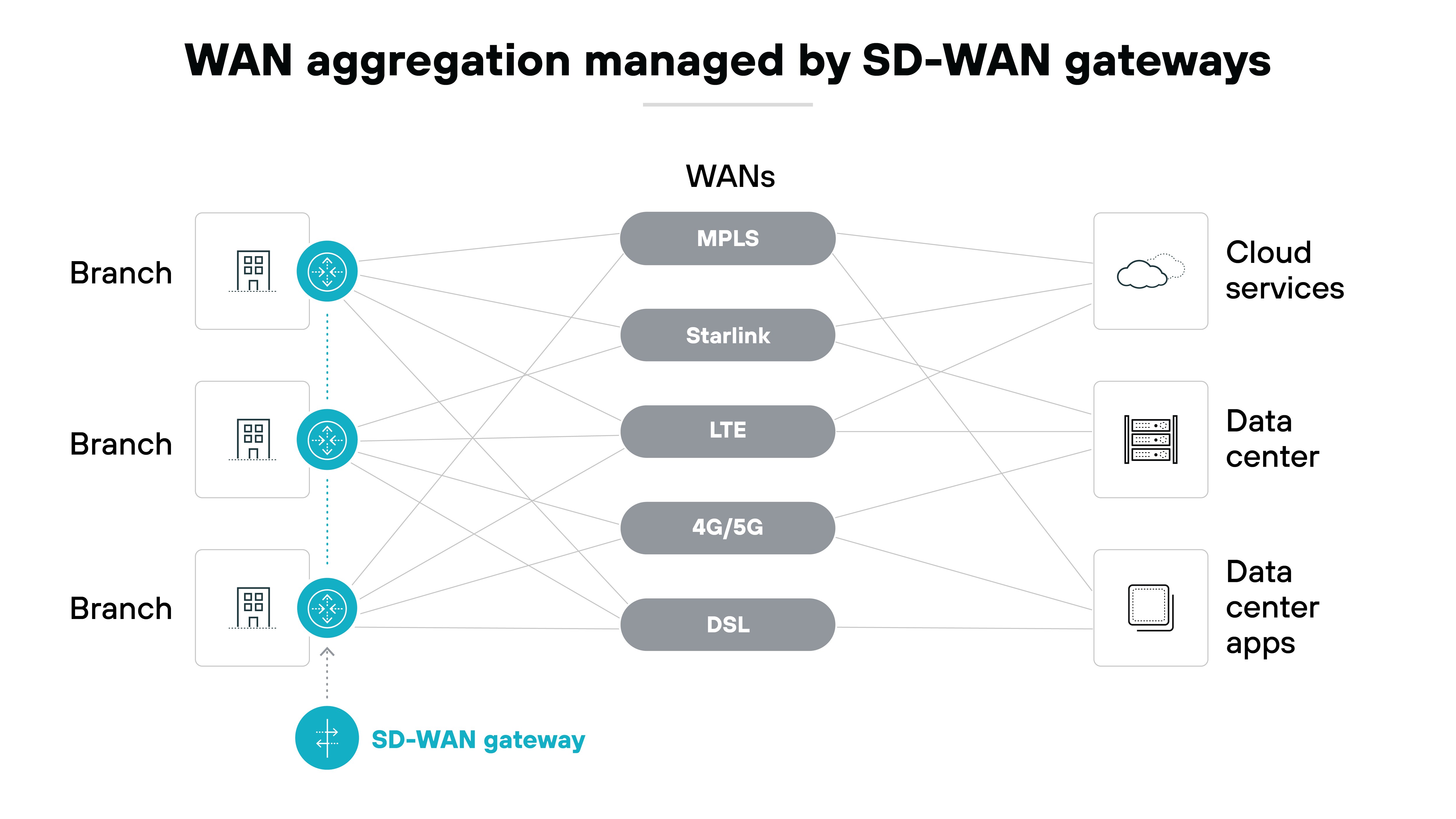
This is particularly useful for organizations with high data transfer needs. Because it helps ensure the network can handle large volumes of traffic without slowing down.
Reliability and failover
Finally, reliability and failover are key features of an SD-WAN gateway.
In the event of a network failure, the gateway can automatically switch to a backup connection. Like a secondary WAN link or a cellular network.
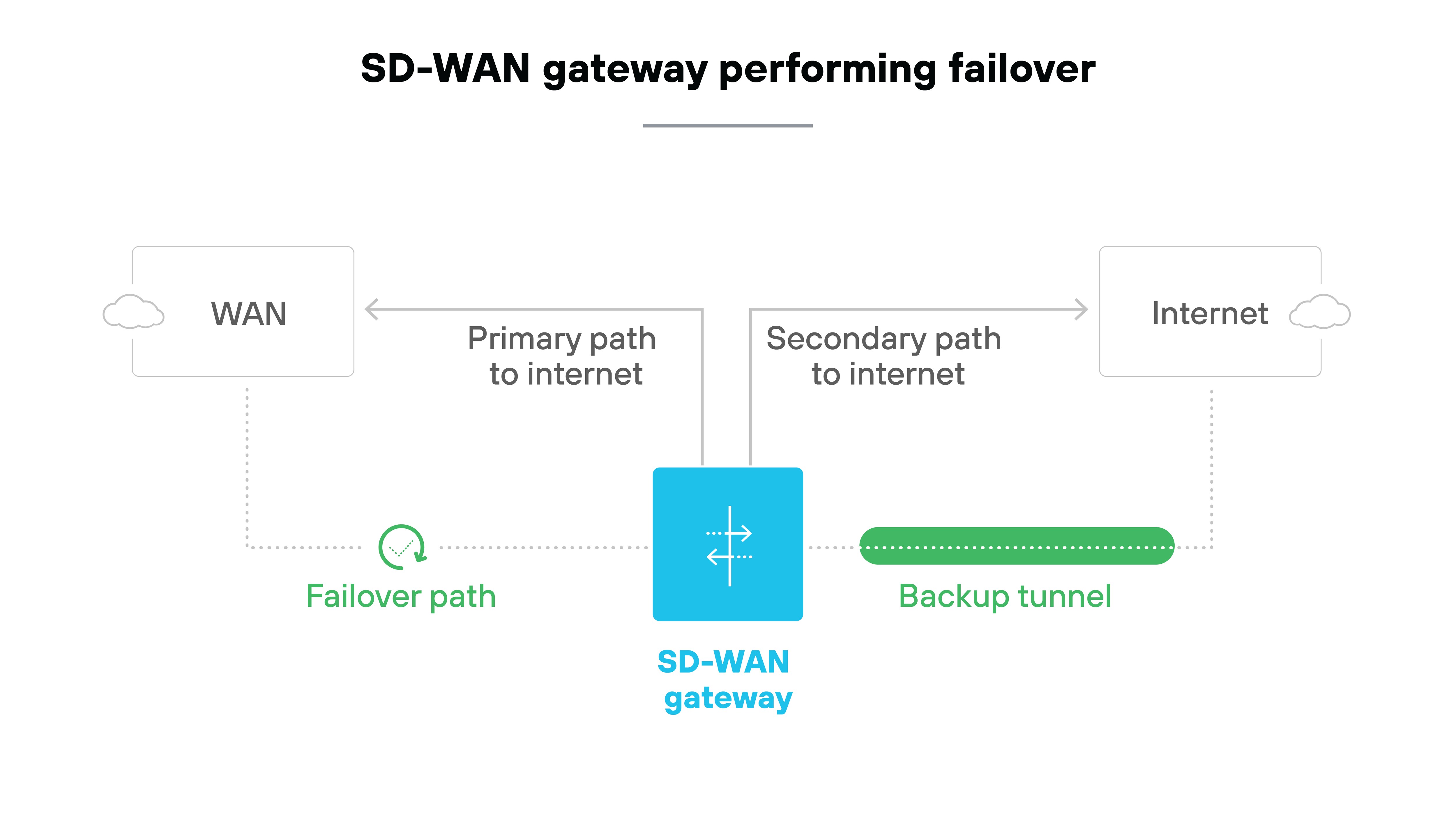
The failover capability ensures the network remains operational, even if the primary connection goes down. And that adds up to lower risk of downtime and sustained business continuity.
What are the different types of SD-WAN gateway form factors?

There are three primary types of SD-WAN gateway form factors: hardware, virtual, and cloud.
Selecting the right form factor depends on your organization's specific needs, including performance requirements, deployment architecture, scalability, and budget considerations.
Hardware SD-WAN gateway
- Overview: A hardware gateway is a physical SD-WAN appliance, typically installed on-premises in a data center, branch office, or other locations. It manages and directs network traffic locally, often preferred in environments where on-site control and high performance are necessary.
- Use case: Suitable for organizations that need dedicated hardware for traffic management and prefer physical appliances for security or performance reasons.
Virtual SD-WAN gateway
- Overview: A software-based solution that runs on virtualized infrastructure. It can be deployed either on-premises (e.g., on a virtual machine) or in a cloud environment. Virtual gateways offer the same functionality as hardware gateways, but they provide greater flexibility when it comes to deployment and scaling.
- Use case: Ideal for organizations that prefer a more flexible, scalable solution–especially those with hybrid cloud environments or those looking to reduce physical hardware.
SD-WAN cloud gateway
- Overview: Hosted entirely in the cloud by a service provider, a cloud gateway manages traffic between branch locations and cloud services. This form factor eliminates the need for on-premises hardware.
- Use case: Best for organizations that are cloud-first or have a significant reliance on cloud services. It provides a managed solution that integrates seamlessly with other cloud services.
What are the disadvantages of an SD-WAN gateway?
The main disadvantage of SD-WAN gateways is that they require an additional resource to be hosted, most commonly in the cloud to establish a global point of presence.
For example: An SD-WAN gateway will require a compute resource to host a virtualized SD-WAN gateway appliance, usually in the form of an open virtual appliance (OVA), creating another network device to manage, update and monitor.
It’s worth noting: Many SD-WAN gateway offerings can be hosted by a service provider to facilitate a hybrid SD-WAN model.
